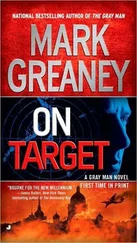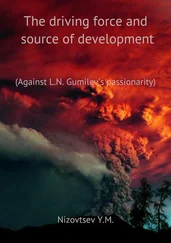On this bus ride, as on the other, several armed guards sat at the front, and an olive-drab truck full of troops followed close behind. Adam wondered if the North Koreans were fearful a Chinese technician would leap from the moving vehicle and run out into the hills around the road. It occurred to him that if these people really believed North Korea was the paradise the woman at the welcome meeting this morning had claimed it was, then it stood to reason they’d need to watch out for foreigners trying to break in to reap the nation’s bounty.
The city of Chongju was all but blacked out, obviously because there was no electricity running this evening. Beyond the lights of the bus he could see only the illumination of a few other vehicles on side streets, plus cooking fires, the odd flashlight, and the glow of cigarettes from people on the sidewalks in the darkness.
There was one major exception to the darkness. The bus entered a large driving circle, and in the middle was a forty-foot-high statue of Choi Ji-hoon in his military uniform, holding a pair of binoculars in one hand and pointing northward toward China with the other. The entire statue was bathed in bright yellow light, and a tiny street market had been set up around it to take advantage of the glow of the Dae Wonsu.
The bus made a turn and Adam leaned into the window glass and felt a sudden lump in his throat as he saw the entrance to the temporary housing facility. He’d spent a great deal of time in the past weeks studying this very place in satellite images. To be rolling through the front gates of the complex—it looked like some sort of prison camp from a World War II film—made him feel so much farther from home.
Orders were given in Korean and then translated into Chinese by a minder, and soon Adam was lined up in front of the bus with the rest of his group. During a short wait in the darkness, Adam had a moment to recognize that the last time he’d looked at this parking lot in the center of all the metal trailers, he’d been sitting in a tidy and efficient conference room in the ODNI building in McLean, Virginia, with a Starbucks latte in one hand and a cinnamon roll in the other. Now he was here, queuing up single-file to be counted and checked in and given a cot.
Even for a NOC who’d played a lot of roles in his career, this felt surreal and otherworldly.
49
Three days before the arrival of the President of the United States in Mexico City, Iranian bomb maker Adel Zarif was driven back to the parking garage construction site on the corner of Vidal Alcocer and José J. Herrera.
It was seven p.m. and the evening rains had ended, dusk was falling quickly on the area, and the street market had closed. But the area was not quiet. The sounds and lights of construction were obvious as soon as he climbed out of Emilio’s truck. Zarif had been told a group of six Maldonado men with experience in construction had been working at the site all afternoon; they had a cement mixer and some portable lights and would be kept away from him while he was here, but they would be all his when he needed them.
He’d already spent the entire day building his weapon at an auto repair yard a quarter-mile away in northern Tepito. He’d taken his three 105-millimeter high-explosive artillery shells, removed the fuses in the nose cones, replaced each with a homemade delayed-action base fuse, wired them to detonate, and attached a blasting cap to each device. The blasting caps were, in turn, attached to a signaling device.
At the beginning of the Iraq War, Zarif and men like him used simple electronic detonating signalers, such as garage-door openers, to command-detonate IEDs. Soon enough, however, coalition forces began taking measures to jam these signals, so Zarif and the others graduated to cell phones.
These worked for a while. In fact, Zarif still used these almost exclusively against insurgents in Syria, but cell phones were not a perfect solution, either. Their signals could be jammed or otherwise interrupted, and large parts of the world were without coverage.
But there was another way. Long-range cordless phones aren’t popular in the United States, but in locations with spotty cell coverage the devices are ubiquitous. The Taiwanese firm StreamTel sold a popular model of phone that consisted of a base station that plugged into a wired phone network, and a handset with a range of up to dozens of kilometers. Two or more handsets could be paired to the same line, and this created a nearly unjammable long-range signaling device.
StreamTel sets were components of thousands of IEDs in the Middle East. The company boasted that forty percent of its world market share came from sales to Iraq, Afghanistan, and Pakistan, and the U.S. military understood the reason behind the demand.
Zarif had a Maldonado lieutenant purchase a base station and two handsets from a telephone store in Guadalajara and ferry them into the capital city, and the Iranian built his device much as he would have done had he been in Mosul, Iraq, or Helmand Province in Afghanistan. It wasn’t state-of-the-art, but the veteran bomb maker always believed the tried-and-true methods were the most reliable.
The entire IED was carried into the construction site just after dark inside a large rolling tool chest the size of a steamer trunk, and then Zarif was left alone behind the orange tarp while the half-dozen other men poured concrete on the sidewalk on José J. Herrera and in the already built stairwell in the center of the site.
The open rebar wall frame that Zarif had found three days earlier had changed. The men today had built a lumber casing around the lower six feet of the wall and they had already filled it with concrete. Above this they had built another wooden frame to raise the wall up to its intended height of twelve feet, but a portion of the frame high on the wall was missing, following Zarif’s instructions.
One by one Zarif took the pieces of his IED up a ladder and onto a scaffolding five feet off the ground next to the wall and he gently reassembled the device in the metal rebar grid exposed by the missing boards. The shells faced out toward the six-lane street on the other side of the tarp. They were positioned ten feet off the ground, and each one was slightly angled with wooden shunts so that they would project downward onto the street.
The artillery shells did not have full charges behind them, nor were they being propelled through long barrels that would spin them through rifling, so they would not launch like they would if fired from a howitzer. Still, Zarif had a design plan for his weapon to ensure that the explosives launched out to the street before detonating. He had two Maldonado men help him place three ninety-pound sheets of iron at the back of the device, behind the shells in the grid, using more wooden slats to hold them in position while he soldered them to the rebar. When he finished this, he had created a plate to deflect the back blast of the initial detonator charge, and thereby propel the artillery shells outward.
Zarif had created identical devices many times in the past, and he’d destroyed enemy armor with them at a range of up to fifty feet.
It took him nearly three hours to ready the IED high on the open wall, and then he covered the entire device with plastic bags, threading them through the rebar, wrapping them from the blast plate in back to the nose cones in front, protecting everything and hiding the bomb from the other Maldonado men. He and his helpers then cleared back the scaffolding and the ladder, and finally they called for the men to bring in the cement blower.
Three hours after this, the concrete was poured all around the device, and the next morning, when the quick-drying concrete had formed, workers began placing a thin sheet of stone veneer over the front of the wall.
Читать дальше












